Repowering Wind Farms
The useful life of a wind turbine is influenced by the combination of different factors during its operation, such as wind conditions, turbulence intensity and other environmental variables. In this regard, and according to the IEC 61400 Standard, the design lifetime for wind turbines should be at least 20 years. However, the useful lifetime currently assured by wind turbine manufacturers as per their corresponding type certificates, can reach up to 25 years.
The recognition of wind farm installations as a viable energy source gained significant traction from the early 2000s onwards. Consequently, in regions where wind power was an early adopter, numerous wind turbines have been in operation for over two decades. However, these aging turbines often utilize outdated technology, characterized by lower hub heights, smaller rotor diameters, lower rated power outputs (typically below 1 MW) and higher maintenance costs.
The renewal of wind farms that are reaching the end of their useful life through repowering initiatives is a strategy largely explored, particularly in regions that experienced significant wind farm development in the first decade of 2000. Given the diverse regulatory frameworks across different countries, operators in the renewables sector have a certain range of options to consider:
- Lifetime extension: This involves extending the operating period of the existing turbines before decommissioning. By assessing the current condition of the turbines and addressing maintenance deficiencies, operators can prolong the lifespan of their assets and optimize profitability.
- Revamping: This intervention involves upgrading some obsolete components compared to the state-of-the-art technology, to increase the performance of the wind farm. Among the most common revamping interventions, re-blading is the most common solution, which consists of replacing only the blades with others with higher efficiency.
- Repowering: This intervention involves the replacement of the entire wind turbine with newer, more efficient technology. While more expensive upfront, repowering offers significant long-term benefits in terms of energy production and environmental impact.
Repowering, in contrast to revamping, is considered a more impactful intervention as it involves dismantling the existing infrastructure to establish a new wind farm with fewer turbines but higher-performing machines. This approach not only enhances production and revenue potential but also offers environmental benefits by reducing land usage.
In sites where repowering is possible, there are several technical advantages:
- Detailed and extended knowledge of the site-specific climatology.
- Use of existing infrastructure (roads, substations…), optimising the CAPEX of repowering.
- Reduction of the number of installed turbines since new and more powerful models are deployed. This will decrease the visual impact and related challenges such as local interferences (bird impact, wake effects, noise).
- Increase renewable energy production due to typically higher average capacity factor of the new models.
The number of wind farms reaching the end of their operational life is increasing and cannot be ignored. This poses environmental challenges during the decommissioning, disposal and salvage phases of the disassembled wind turbines. Additionally, meeting European renewable energy targets, such as those outlined in various national and European frameworks aiming to significantly increase the share of renewable energy by 2030, requires more than just installing new capacity.
Various measures aimed at simplifying the authorization process have been implemented through dedicated Law Decrees and other regulations across Europe. These measures aim to streamline authorization procedures for the approval of non-substantial variations required for the modernization of existing plants.
In conclusion, wind farm repowering presents a valuable opportunity to breathe new life into aging infrastructure, driving efficiency, sustainability, and innovation in the wind energy sector.
Vector Renewables offers comprehensive support for evaluating repowering projects, covering all aspects all aspects including permits, environmental constraints, wind and energy assessment, as well as cost assessment for repowering.
When you subscribe to the blog, we will send you an e-mail when there are new updates on the site so you wouldn't miss them.

